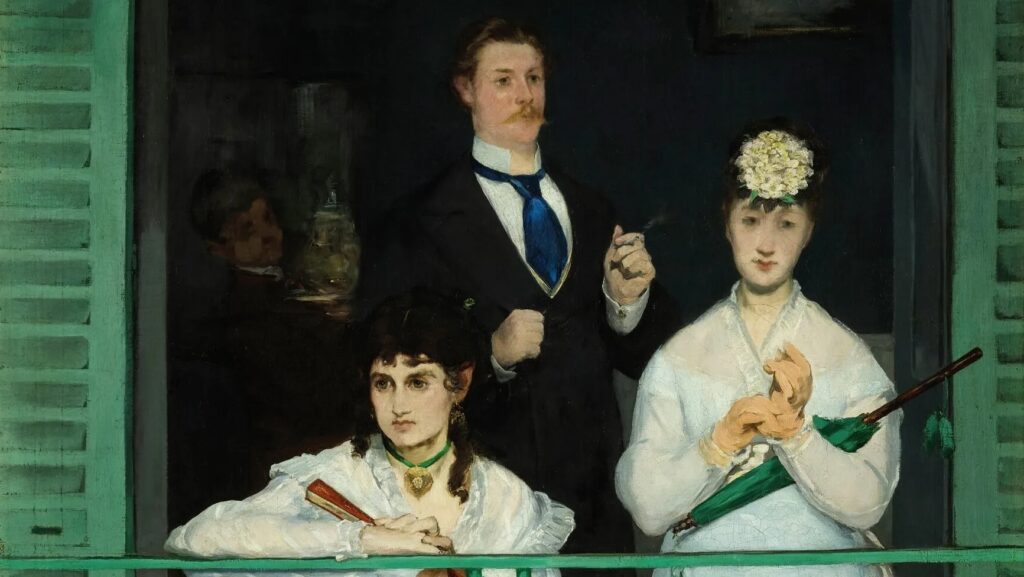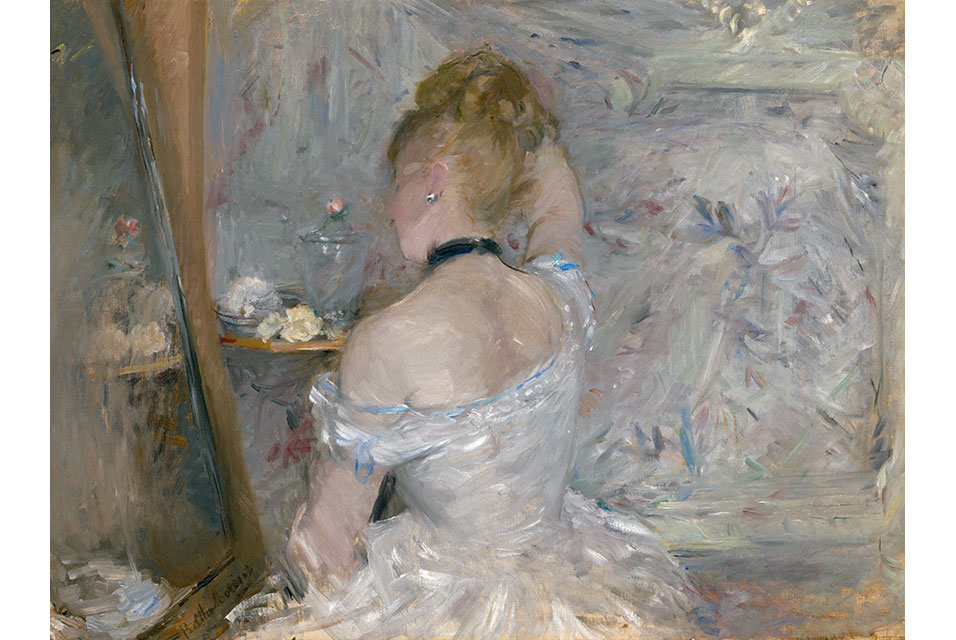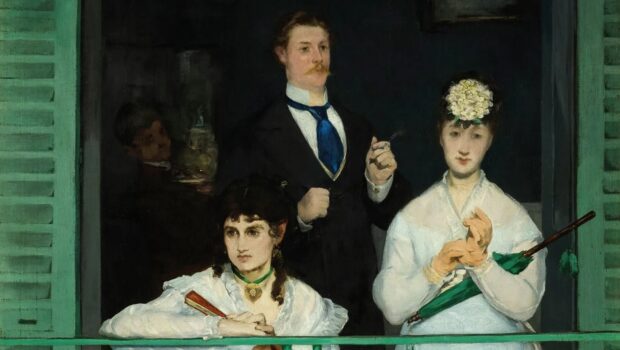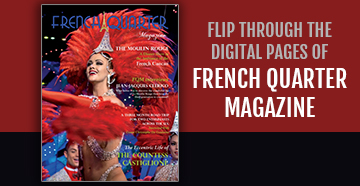Manet & Morisot—A Fresh Look at an Impressionist Dialogue (Legion of Honor, San Francisco, Oct 11, 2025–Mar 1, 2026)
San Francisco—In the storied galleries of the Legion of Honor, a new exhibition opens this fall that promises to challenge how we understand two central figures of French Impressionism: Édouard Manet and Berthe Morisot. Manet & Morisot, running from October 11, 2025, to March 1, 2026, is the first major museum exhibition dedicated solely to the artistic exchange between these two painters—collaborators, colleagues, and family by marriage. (FAMSF, press release)
This is not a simple juxtaposition of works but a re-examination of influence: how Morisot shaped Manet’s late style, how both absorbed and challenged each other’s techniques and subject choices, and how their interwoven legacy invites a more nuanced narrative of Impressionism.

Context & significance
A centennial moment at the Legion of Honor
The exhibition is part of the Legion of Honor’s 100-year centenary celebrations (Legion of Honor 100), which launched in 2024 and run through late 2025, commemorating the museum’s founding in 1924. The curatorial program for the centennial intentionally spotlights French art—aligning with the museum’s origins and mission. Manet & Morisot is billed as the penultimate exhibition of that centennial cycle.
As Thomas P. Campbell, Director and CEO of the Fine Arts Museums of San Francisco, stated in 2025, “our forthcoming year of exhibitions testify to art’s enduring power to inspire, provoke dialogue—featuring pioneers such as Manet and Morisot in conversation with the museum’s permanent collection.” (ArtDaily)
The decision to center this show during the centennial is symbolic: it underscores the museum’s identity as a bearer of French artistic heritage on the U.S. West Coast, while also signaling its ambition to evolve narratives rather than simply restate tradition.
A provocative rethinking of influence
Traditional art historical accounts often cast Morisot as a protégé, or muse, to Manet—a gifted painter who absorbed his innovations. Manet & Morisot reconfigures that paradigm. The show posits that over time, influence flowed in both directions: in the later 1870s, Manet began to incorporate lessons from Morisot’s color use, subject matter, and delicate brushwork. (See Artnet commentary) (Artnet News)
Emily A. Beeny, Chief Curator at the Legion of Honor and curator-in-charge of European Paintings, has explained the show’s central ambition: “A large part of the point of this exhibition is to demonstrate that the influence between these two artists, which was long presumed to flow in a single direction—namely from Manet to Morisot—was actually deeply mutual.” (Datebook (Fine Arts Museums of San Francisco)
By viewing their works side by side—shared motifs, mirror compositions, evolutions in subject—the exhibition invites visitors to see Impressionism as less hierarchy than conversation, less linear progression than shared experiments.
Exhibition layout & highlights
The exhibition unfolds across several thematic axes, tracing their relationship from its early spark in 1868 until Manet’s death in 1883, and beyond.
Beginnings: introduction & the Louvre meeting
The opening galleries trace Morisot’s formative years. In 1868, she was copying works at the Louvre when she was introduced to Manet by a mutual acquaintance, the painter Henri Fantin-Latour. That meeting marks a turning point. She posed for his The Balcony (1868–69), which remains a foundational image in their narrative. (Artnet News)
By starting with Morisot’s early works and her initial exposure to Manet, the exhibition resists the usual teleology (Morisot as follower) and instead treats her as an equal voice engaging with modernity from the outset.
Dialogue & reciprocity: shared motifs, mirrored works
One of the most compelling segments juxtaposes paintings of the same subject by both artists — for instance, Morisot’s Woman at Her Toilette (1875–80) alongside Manet’s Before the Mirror (Devant la glace) (1877). The spatial inversion, the handling of light, the positioning of the female form — all invite comparison. (Artnet News)

Likewise, Boating (1874/1879) by Manet is compared with Morisot’s Summer’s Day (c. 1879), where both depict a water scene framed by verdure and reflective surfaces. The curators point to how Morisot’s compositional sense may have influenced Manet’s later water scenes. (Artnet News)
Beyond these formal pairings, the exhibition devotes sections to their treatment of domestic scenes, female subjects and private leisure—areas where Morisot often led as innovator. Paintings by Morisot like The Cradle (1872) and Summer’s Day are used to show how her color palettes, light handling, and psychological emphasis preceded or redirected Manet’s later choices. (Datebook+Fine Arts Museums of San Francisco)
Shadow & final years: influence on Manet’s late style
The show carefully traces how in his final years, Manet’s palette lightens, his subject matter shifts toward more domestic scenes, fashionably dressed women, and interiors. The curators assert these shifts echo Morisot’s interventions decades earlier. (San Francisco Chronicle)
One gallery centers on works after 1880, where Manet’s later canvases are read through a Morisot-inflected lens. In this context, Morisot’s gentle brushwork and attentiveness to femininity and interior life appear as quietly transformative to Manet’s evolving style.
Legacy & resonance: afterlife, influence, feminist reclamation
The final leg of the show considers Morisot’s posthumous reputation—how feminist art history has re-evaluated her, and how her legacy influences women artists today. The exhibition includes archival materials: letters, exhibition catalogs, the development of her critical reception over time.
Though the show ends in 1883 (with Manet’s death), it gestures beyond, suggesting that their intertwined legacy is still unfolding. The book published in conjunction with the exhibit, Manet & Morisot, includes essays that place Morisot at the center of Impressionism rather than on the margins. (Yale University Press London)
Curatorial essays in the Yale University Press catalogue argue that Morisot’s extensive network—her role as bridge between avant-garde women artists, her salon connections, her status as a mother-artist—deserves greater attention. (Yale University Press London)
Curatorial vision & scholarship
Curator Emily Beeny has been pivotal in bringing this project to fruition. In press interviews, she has described Morisot as “a force whose color, gesture and subjectivity shaped Manet’s late work more than we have acknowledged.” (Fine Arts Museums of San Francisco)
One key curatorial decision was chronological versus thematic arrangement—the exhibition uses a hybrid: early chronological framing (1868–1875) to set historical context, followed by thematic segmentation that encourages dialogue across time (e.g. Domestic Interiors, Women & Leisure, After 1880). This allows viewers to perceive both evolution and resonance.
Another bold choice: many works are presented in pairs or small clusters rather than in isolation. Rather than seeing a Morisot painting as background, the show positions it in conversation with Manet’s to provoke new readings. Critics have lauded this as a curatorial move that unsettles entrenched hierarchies. (See Artnet commentary) (Artnet News)
Furthermore, loans are generous and international: lenders include the Musée d’Orsay (Paris), National Gallery of Art (Washington), J. Paul Getty Museum (Los Angeles), the Cleveland Museum of Art, and more. Through these partnerships, the exhibition draws a global narrative around this Franco-American reception. (Artnet News)
Reception & critical conversation
Even before its opening, Manet & Morisot has been dubbed a must-see. Datebook (San Francisco Chronicle) calls it a “fresh take” on two French masters and highlights that the show will move beyond the usual narrative of oppression or musehood. (Datebook)
Artnet emphasized the curatorial claim that “the influence flowed in both directions,” noting that many works in the show had never been displayed in direct juxtaposition before. (Artnet News)
Local press, including the San Francisco Chronicle, has stressed how the exhibition fits into the museum’s centennial momentum—part artistic statement, part institutional reaffirmation. (San Francisco Chronicle)
While some scholars caution that influence is always messy and overemphasis on reciprocity may underplay structural inequalities (gender, patronage, social capital), most agree that the show succeeds in compelling reconsideration of Morisot’s role.
Visitor experience & practical advice
To fully engage with Manet & Morisot, here are some tips:
- Timing: Go early or midweek—this show will draw local and touring audiences alike.
- Audio guide & docent talks: The museum offers Art Talks onsite and online; select presentations are also available in Mandarin or Spanish. (FAMSF Docents)
- Lecture series & public programming: Check FAMSF’s calendar for curator talks, panel discussions, and receptions curated around women artists and Impressionism.
- Allow time for reflection: Because many works are small or nuanced, linger in galleries rather than breeze through.
- Pair visits with related shows: During 2025, the de Young is hosting Art of Manga, offering a striking contrast of European painting and global pop culture. (ArtDaily)
The lasting resonance of a shared vision
Manet & Morisot does more than reframe two canonical painters—it models how to think about artistic relationship, influence, and equality. In 2025, when institutions are revisiting the construction of art history, the show encourages a narrative of exchange over hierarchy, of collaboration over conquest.
For American audiences, the exhibition offers an invitation to re-see familiar names under new light: to acknowledge Morisot not just as companion, but as force; to locate Manet’s evolution in dialogue rather than dominance. And through that, we see Impressionism as a living conversation, not a static canon.
Header Photo Credit: Édouard Manet. “The Balcony,” 1868-69. Oil on canvas, 66 15/16 x 49 3/16 in., (170 x 125 cm). Musée d’Orsay. © RMN-Grand Palais / Art Resource, NY





















Fantastic read! This article does an excellent job of breaking down what smart homes are and how they’re transforming modern…